
Who’s who: Understanding your business with customer segmentation
Main illustration: Henri Campeã
At some inflection point of growth, it becomes impossible to intuitively know your customers, let alone decide which ones to focus on.
As Intercom’s business grew rapidly in 2017, we found ourselves at this exact crossroads. We could no longer assume all our customers had uniform needs and could be reached the same way. Having grown to more than 300 people, communication between colleagues became complex, fracturing that crisp, shared notion of the customer we once took for granted.
Up until this point, to understand our customers, we had primarily relied on the Jobs-to-be-Done framework, product sense, research insight, sales input, and a belief that our customers were companies just like us. This final assumption in particular was no longer true or useful. Indeed, among our customers were B2C companies, small businesses, and large enterprises along with customers in places and industries well beyond Silicon Valley.
“We needed a new way to understand our customers in a structured, shared manner”
We needed a new way to understand our customer base in a structured, shared manner, and so we looked to segmentation. Business Operations initiated segmentation because of its high priority and our mandate to catalyze collaboration and push progress. As a company, we were motivated by a desire to cross the chasm from early to mainstream adoption and by an immediate need to know who our customers actually were, amidst unprecedented growth.
What is customer segmentation?
Segment (noun): One of the constituent parts into which a body, entity, or quantity is divided or marked off by or as if by natural boundaries (Merriam-Webster Dictionary).
Customer segmentation is the process of grouping customers together based on common characteristics. These customer groups are beneficial in marketing campaigns, in identifying potentially profitable customers, and in developing customer loyalty.
Common types of customer segmentation include:
- Demographic segmentation
- Geographic segmentation
- Behavioral segmentation
- Psychographic segmentation
- Customer journey segmentation
Once you have these segments, you can build the right product, set the right distribution and positioning, and match the right sales motion to each customer, while also refining your segments over time. Done well, it’s a model that gives anyone at your company an immediate understanding of your customers.

However, let us also be clear on what customer segmentation is not:
- Mere intuition about customers.
- A substitute for strategy or planning.
- Judgment on which customer segment(s) to pursue.
Segmentation cannot incorporate all strategic considerations nor changes to product, pricing, and packaging over time. Instead, it’s an ongoing exercise to capture relevant differences between your customers.
The importance of customer segmentation
For a growing business, segmentation is necessary to know your customers and your market, and share this understanding across teams. Beyond a certain size, it’s impossible to do without. At Intercom, we have benefitted from customer segmentation in these ways:
- Describing types of customers in a common way across go-to-market, product, and engineering. For example, our Sales team is now able to give segmented customer feedback to our product leaders to influence our roadmap.
- Understanding our most and least engaged customers at a granular level. For example, our Analytics team might find that one customer segment tends to use our product weekly, while another just monthly.
- Surfacing promising or untapped business opportunities. For example, imagine this scenario: our Marketing team discovers a new segment that’s already converting well without having been explicitly targeted before.
- Enabling us to make tactical decisions with a holistic view of our customers. For example, our Product team could decide to build a data export API after learning our fastest growing segment exports their conversation data far more often than other segments (you can already do this in Intercom 😉).
- Informing our approach to the market. For example, our leadership team might decide to focus our company strategy on targeting the segments with the best revenue retention.
- Assessing progress on our marketing strategy. For example, our Finance team is now able to confirm whether new customer growth is up in our target segments.
How to segment customers
As a driver of customer segmentation, you can think of the market segmentation process in three distinct phases: aligning on problems and principles, creating your segments, and driving internal adoption.
1. Align on problems and principles
Before diving into the data, I recommend establishing a shared definition of success at the project’s outset. You’ll reduce the chance of misunderstanding and increase your freedom to operate if everyone is aligned on the problems to be solved and the principles your solution must reflect.
Define the problems to be solved
First, you need to ask yourself, what problems is the business trying to solve with customer segmentation? Solicit input from each company leader involved in the process, align your working group, and set the expectation that you will continue to do this in phases two and three as well.
From our initial effort in late 2017, some problems we set out to solve for each stakeholder were:
- Marketing: Understand our customer base are, so we can effectively reach them. You can’t find email lists using Job-to-be-Done, but you can find ones for B2C subscription businesses that have a high volume of website traffic.
- Sales: Be able to route prospects to our self-service flow or the most appropriate team within Sales, e.g. startups, SMB, MME, based on well-defined customer segments.
- Support: Route support questions to the right channels, e.g. Resolution Bot, our help center, or a support rep, to improve customer and business outcomes.
- Product: Know which product requests and feedback matter most to which customers and prioritize accordingly, rather than by volume alone.
- Leadership: Create a shared language for product, engineering, and go-to-market to describe customers.
Spelling this out helped leaders align on what customer segmentation would and would not achieve, creating trust and space for myself and a smaller working group to operate. Given the scope of segmentation, you owe each leader in your company a 1:1 meeting to get their input. The list above was the result of conversations with leaders from Marketing, Sales and Sales Ops, User Research, and Product along with our executive team.
Establish your guiding principles
In this same manner, we also solicited and settled on guiding principles that made iterating on our customer segmentation model even faster. Here are the five guiding principles we agreed to:
- At most five customer segments, for simplicity.
- Ability to look back at past performance, for long term viability.
- Single, agreed-upon source of truth for segmentation inputs, for data integrity.
- Permission to have subsets and overlays, for complete context.
- Compatible segmentations for Sales, Marketing, Product, and Engineering, for shared reference points.
By aligning on these parameters for the final result, we reached a solution easily, were confident we’d receive stakeholder approval, and cleared obstacles to implementation early on. If you can identify the principles that matter to each of your stakeholders (the “how”) in addition to problems to be solved (the “what”), phases two and three will be much easier.
2. Create your customer segments
This phase is an iterative process of gathering customer data, aligning stakeholders on variables to segment by, and validating potential segments. From the start, it’s critical to form your own opinion, ensure coverage (any customer could be segmented by these variables), and relevance (variables indicate differing customer needs) for all teams at your company.
Gather data about your customers
You should start by gathering internal customer data and any available external sources to arrive at variables you can segment most or all of your customers by. This data typically comes in three broad flavors:
- Firmographic: This includes employee headcount, revenue, vertical, business model, location, tech stack, web traffic, and other publicly available information about the customer. If you’re a B2C company, you might use demographic segmentation, e.g. age, gender, instead. While some of this demographic data is likely available to you, most requires effort to collect – you could survey your customers, for example – or money to buy at scale. At Intercom, we used several external sources to provide
additional data on our customers’ business models, size, web traffic, and verticals. - Product behavior: This refers to classifying customers by how they use your product or service in terms of frequency, inputs (e.g. actions taken), outputs (e.g. time or dollars saved), or funnel stage and milestones.This data is internal, specific to your product, and accessible only through your own efforts. We worked closely with our Product Analytics team to understand how customers activated on different use cases in Intercom.
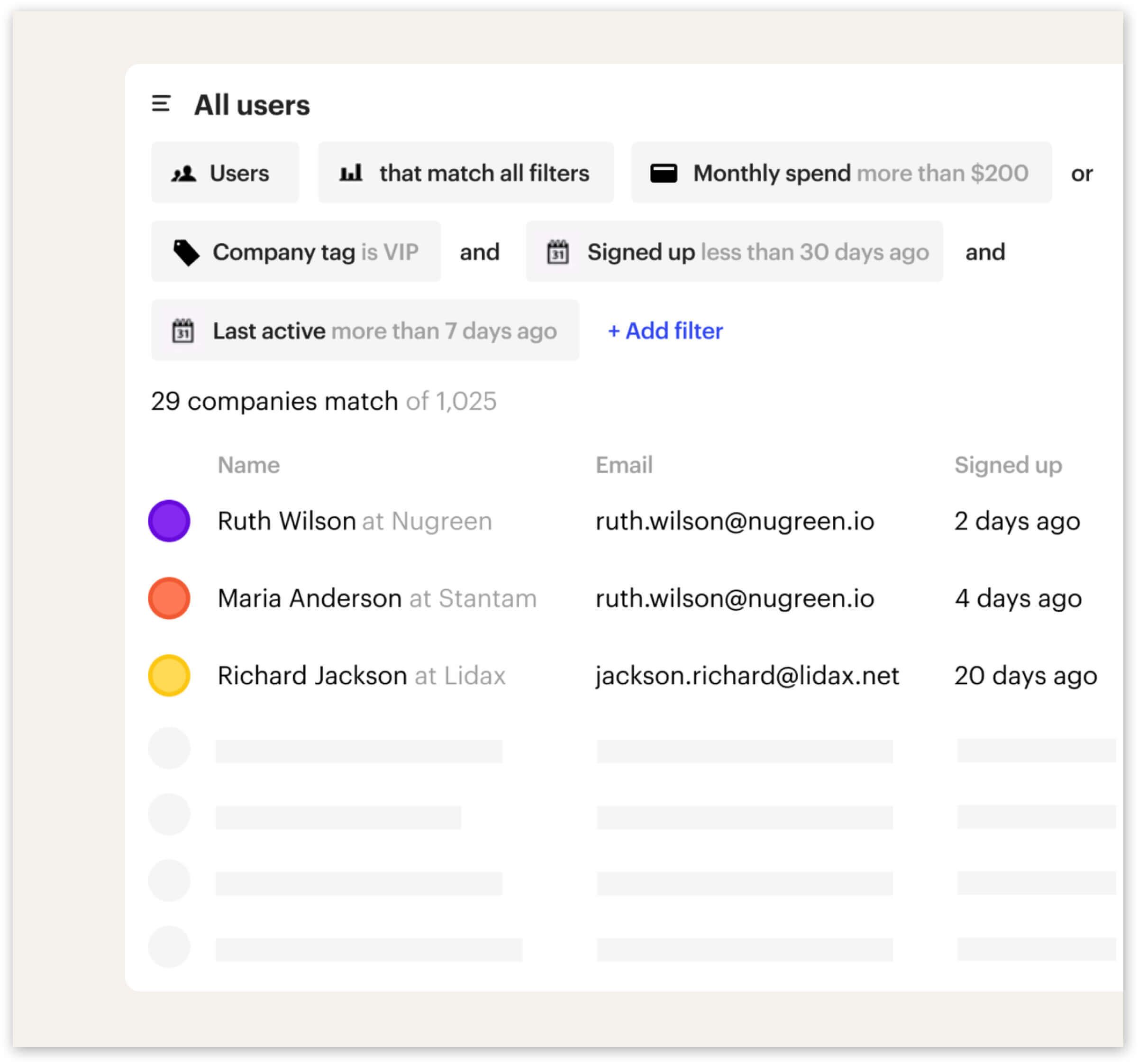
We use data in Intercom to understand our customers’ behavior in the product.
- Other factors: For certain industries there may be other relevant segments – for example, disease or diagnosis in healthcare. In a prior job at a hospital software and services firm, I segmented our customers who were medical practices by primary care versus specialty.
Generally, the principal variables of interest are firmographic (or demographic) and behaviors exhibited when using your product or service.
Select your segmentation variables
Your minimum criteria for selecting variables should be that a majority of your customers can be segmented by the ones you’ve chosen. For example, if you’re evaluating whether to segment your customers by revenue, your assessment might go one of two ways:
- If most of your customers are private companies that don’t share financial results, segmenting by revenue won’t be feasible. You’ll not be able to obtain such data.
- If your customers tend to be larger, public companies, then segmenting by revenue and size is reasonable, as most report financial results and headcount on a quarterly basis.
Your variables should also reflect meaningful customer differences. In our first iteration, we felt industry vertical was a necessary dimension. Through the segmentation process, we found that a B2B versus B2C distinction was sufficient to capture differing needs. Consider these other examples:
- For business collaboration tools, headcount likely indicates differing needs. A Slack or Atlassian customer with 1,000 employees will need more support and features than a customer with 10 employees.
- For companies that sell to B2C businesses, web traffic or retail foot traffic is probably a better indicator. Shopify may find that customers averaging 100,000 daily visitors need more automation and better reporting than customers with only 100 daily visitors.
Decide on your approach to segmentation
Once you’ve arrived at variables to segment by, prepare a first draft of segments to run by each stakeholder. There’s no hard and fast rule for how you arrive at segment boundaries, except that they must reflect different underlying needs and will need to be agreed on by the leaders of each team.
Some approaches to segmentation I’ve seen and used in my career include:
- Performance: If we choose to segment by business model and vertical, do we see B2B customers start at higher revenue than B2C customers (acquisition)? Do certain verticals retain better over time (fit)? In our case, the Finance team was supportive of using this approach for our first iteration.
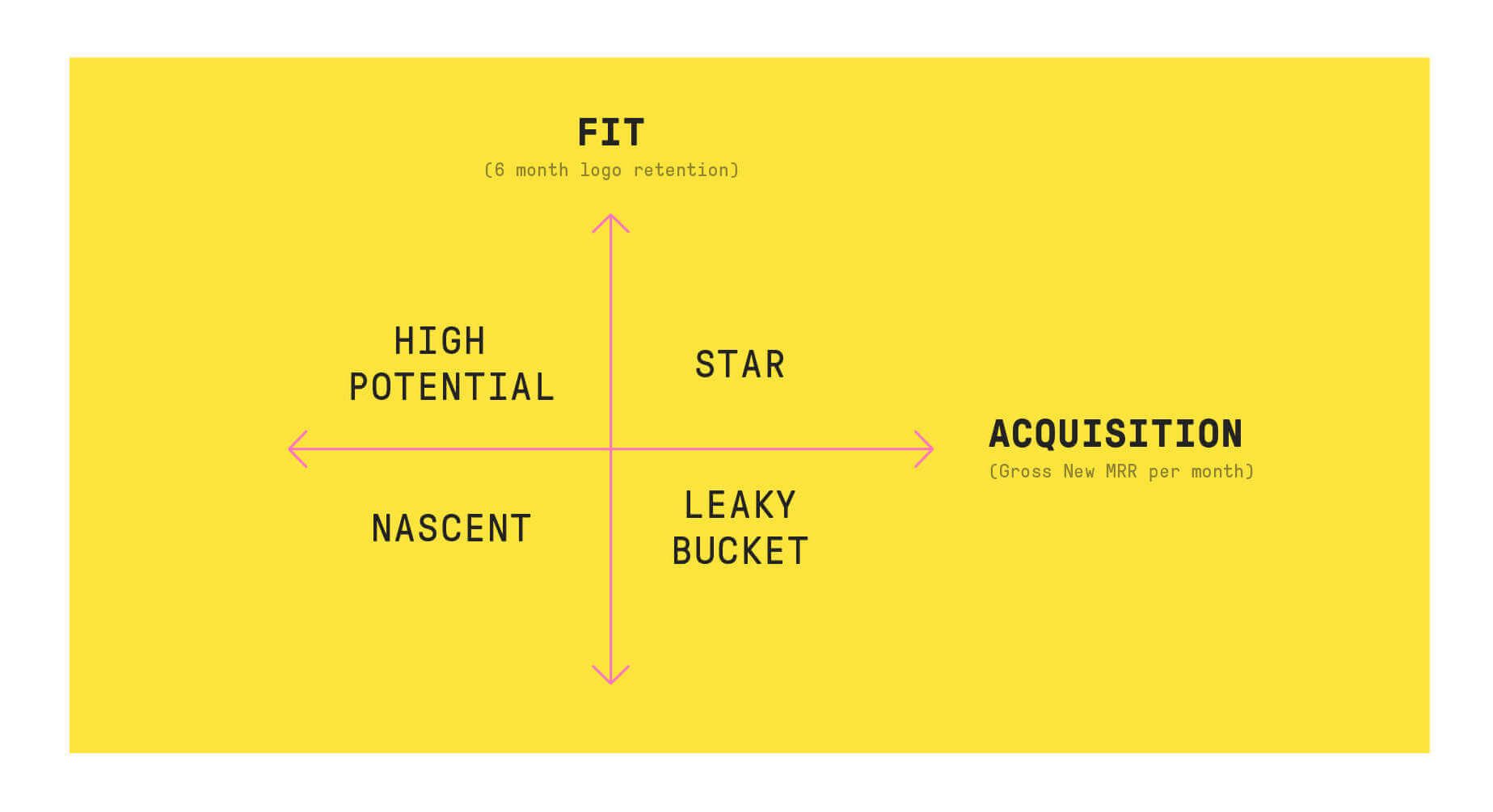
- Buyer personas: Who decides to buy your product? For example, you may find that individual users or founders make the purchasing decisions at small startups, team leads at mid-market companies, and department heads at large enterprises. Your Marketing, Sales, or Research teams can likely shed light on your buyer personas.
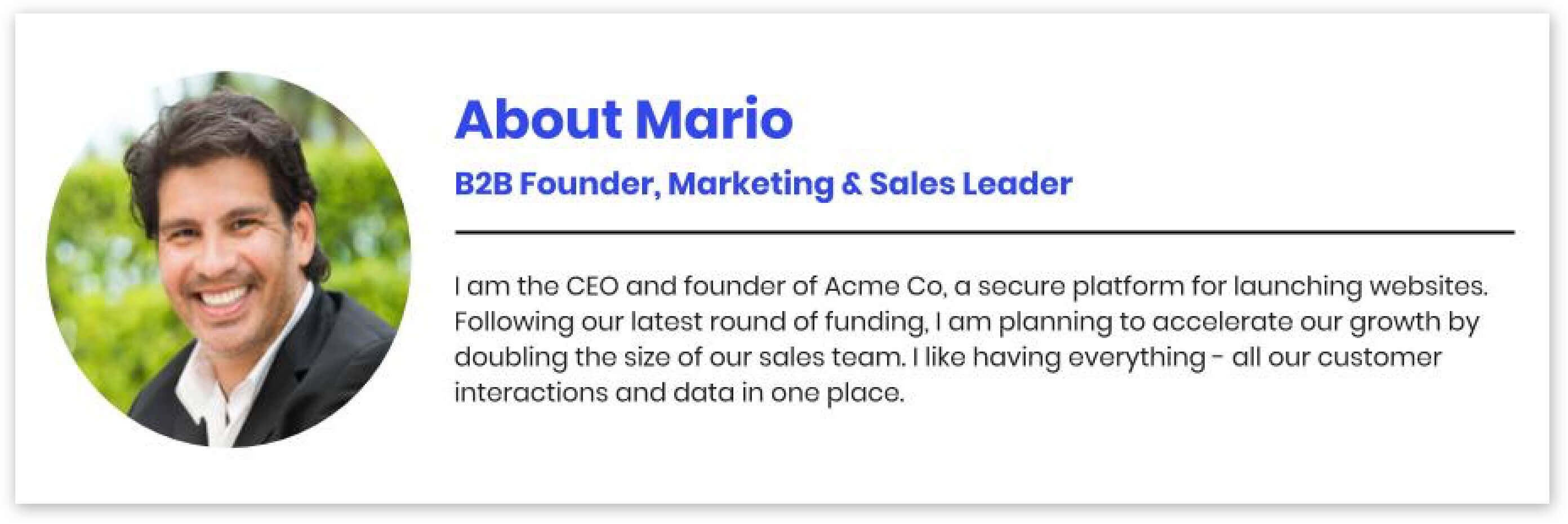
- Channel and sales motion: The manner in which you market and sell to companies often differs by vertical and may reveal different underlying needs. For example, government, healthcare, and banking firms all have long sales cycles through bid and proposal processes, while retail, media, and other B2C companies often buy software off the shelf and can be reached via channels like paid ads.
Validate your customer segments
For your customer segmentation efforts, success should be arriving at the simplest segmentation that covers most or all of your customers, reveals underlying needs, and has the broadest stakeholder buy-in.
We validated each new draft with key stakeholders from Marketing, Sales, Product, Engineering, and Finance, and iterated until we had a working segmentation model to share. Our initial efforts resulted in this matrix:
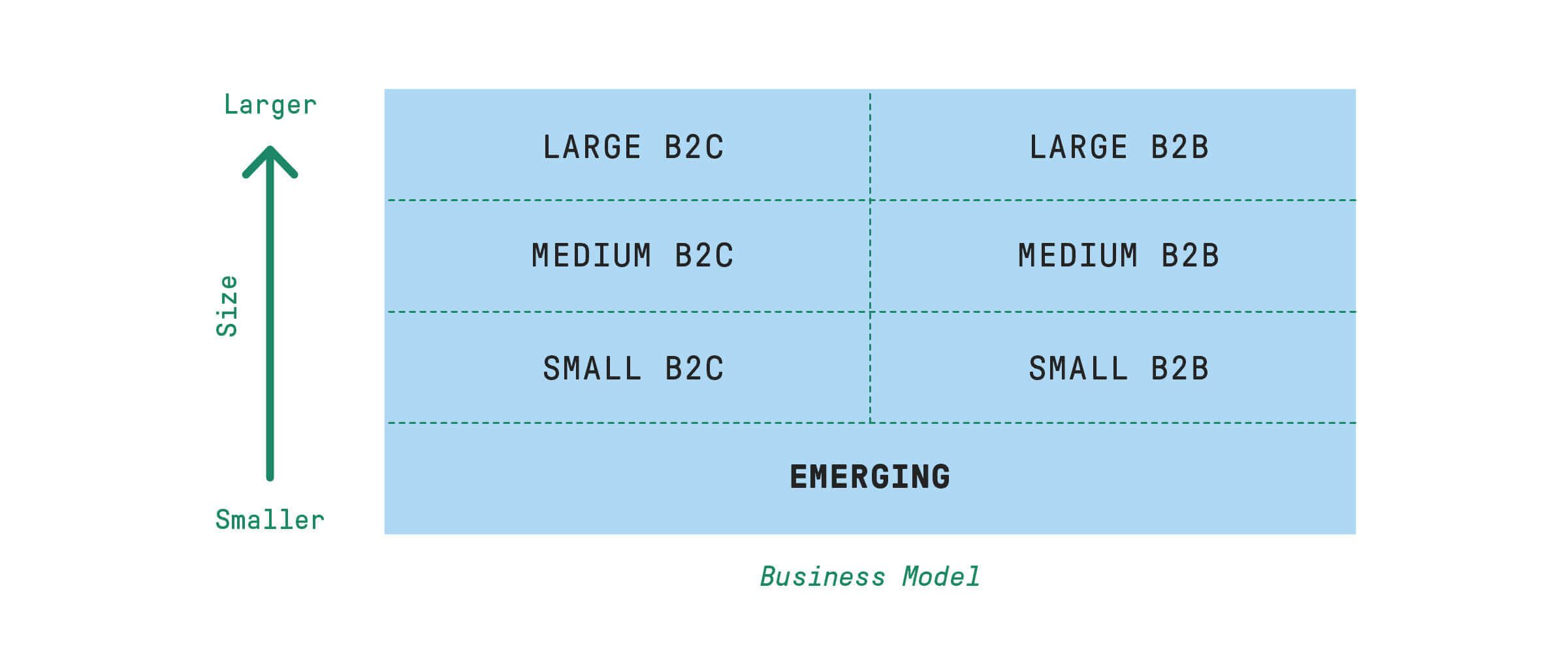
To further validate our model, we interviewed representative customers in segments that were new to us as a business. We wanted to ensure we were, in fact, revealing different needs. To this end, I interviewed B2C customers to understand Intercom’s appeal to them, focusing on these three attributes:
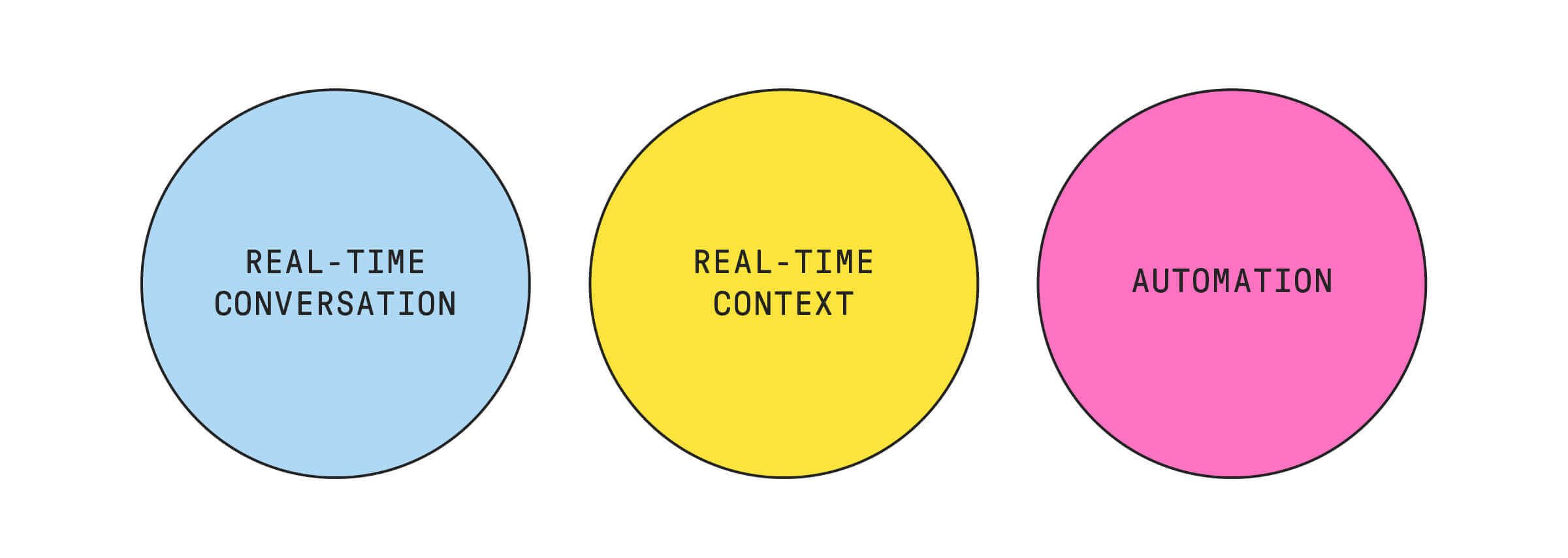
What I discovered was that B2C companies used Intercom in different ways than B2B companies – which made sense given their own customers’ needs. Thus, we validated that our segmentation grouped customers by differing needs with implications for what we would build, market, and sell.
With a working model in hand after data analysis and stakeholder consultation, your final step is to validate this segmentation and receive signoff from the project’s approver – in our case this was our COO Karen.
3. Drive internal adoption
Though last, adoption is the most important phase as it determines whether the problems you identified at the beginning will actually get solved. To do this well, you must share new segments with relevant teams and enable them to use them in both strategic and day-to-day work. Here are a few strategies I used to drive adoption of our segmentation at Intercom.
Conduct a roadshow with relevant teams
We shared new segments with managers in Marketing, Sales, Product, Engineering, Finance, and Analytics, along with a business overview and profiles of notable customers for each segment. Our business overview included total revenue and average revenue per account (ARPA) by segment, share of each segment by number of customers, and year-on-year growth for each segment. Here’s an example of a slide I created for one of our segments:

Solicit questions from stakeholders
Conducting the roadshow was just the start of our conversations with each team. We also encouraged our stakeholders to ask follow-up questions, covering everything from related customer attributes and funnel performance to our market share, and more. Driving meaningful adoption meant answering such questions and giving enough context for these teams to make use of segmentation.
For example, our Marketing organization wanted to know where our customers segments differed and how they could act on such insight. So, I shared a segmented view of funnel conversion for our Customer Lifecycle and Product Marketing team, ad targeting criteria for our Demand Generation team, and analyst materials for our Communications team. Here’s an example of a slide I created to show conversion by segment:

Empower stakeholder usage
For some teams, an announcement and walkthrough of the new segments will be enough. For others, you may find that joining a staff meeting, offering open Q&A sessions, or even building new frameworks and bringing a segmented lens to existing projects will be necessary. The litmus test for adoption is that your colleagues expect a segmented view for any project they take on.
“The litmus test for adoption is that your colleagues expect a segmented view”
Up next: Segmenting by needs and value
Our customer segmentation strategy resulted in market-based segments, using attributes like company size and business model to provide a foundational understanding of our customers. The next step for us was to capture how customers differ by the problems they’re trying to solve and their willingness to pay. This can take the form of segments or personas, layered on top of our customer segmentation:
- Market-based segments: Based on observable psychographic, firmographic and demographic attributes.
- Needs-based segments and personas: Based on business needs, use cases, and jobs-to-be-done.
- Value-based segments and personas: Based on willingness to pay versus the status quo.
At Intercom, we have complemented market-based segments with needs-based personas to inform product development, packaging, and pricing. In this way, segmentation can remain a perennial tool for understanding and serving your customers.
Customer segmentation is a team sport
Customer segmentation is only effective if it is a cross-functional endeavor from the very start. While my team was responsible for taking segmentation from a business need to a functional tool, its success rested on Marketing, Sales, Product, Finance, and Analytics buy-in. After all, different customer needs – a clarified view of which is the result of segmentation – implies different features to build, different distribution and positioning in the market, and different sales motions.
Getting segmentation right without substantial analysis, stakeholder feedback, and iteration is unlikely. Ultimately, alignment and adoption need to go hand in hand so that all teams can benefit from understanding the business using this new framework.






